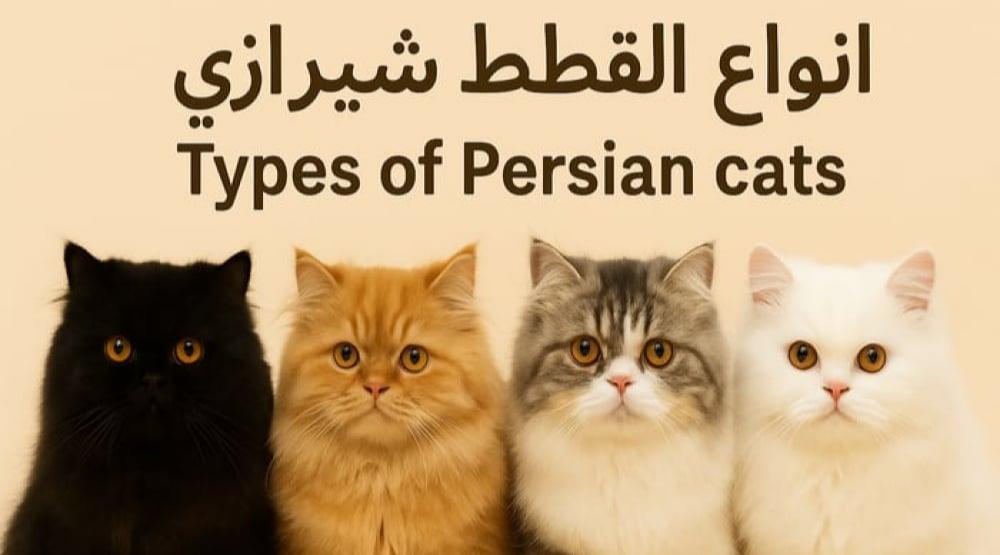The keyword types of Persian cats ranks highly among cat enthusiasts in Saudi Arabia and beyond. Persian cats are beloved for their striking appearance, gentle temperaments, and adaptability to family life. With growing interest in breeding and adopting these beautiful felines, it’s essential to understand the different types of Persian cats, their unique traits, and how to care for them. In this guide, we’ll explore the four most popular varieties, highlight the original Persian cat’s features, discuss potential drawbacks, and share premium feeding options from Trappy Bites.
What Are the Types of Persian Cats?
Persian cats display a wide range of looks and personalities, making them one of the most sought‑after breeds. Understanding these types of Persian cats helps ensure you select the right companion for your home and lifestyle.
1. Traditional (Doll‑Face) Persian
- Appearance: Rounded head, moderately flat face, small nose, large expressive eyes, and a sturdy, cobby body.
- Origin: The oldest Persian type, predating modern hybridization.
- Temperament: Calm, deeply affectionate, and forms strong bonds with their owner.
2. Himalayan (Colorpoint) Persian
- Appearance: Long flowing coat with darker coloration on ears, face, paws, and tail; striking blue eyes.
- Origin: Crossbreed between Persian and Siamese cats.
- Temperament: Gentle and playful, enjoys interactive time with children.
3. “Peke‑Face” Persian
- Appearance: Ultra‑flat face with a deeply recessed nose, very short muzzle, large round eyes.
- Care Notes: Requires diligent eye cleaning and respiratory monitoring.
- Temperament: Extremely laid‑back, loves lounging in plush, cozy spots.
4. “Moon‑Face” Persian
- Appearance: A rounded but less extreme flatness than the Peke‑Face; clearer nose definition.
- Balance: Offers the charming looks of a Persian with fewer health concerns and easier care.
Characteristics of the Original Persian Cat
Distinguishing the purebred “original” Persian from hybrids is vital when assessing types of Persian cats. Key traits include:
- Head & Face: Clearly round, small non‑prominent nose, large open eyes.
- Coat: Long, dense, silky fur covering the entire body, including legs and tail.
- Colors: Common shades include white, gray, orange, and golden, often with subtle variations.
- Temperament: Quiet, non‑aggressive, prefers peaceful environments, minimal vocalization.
- Care Requirements: Daily grooming to prevent matting and manage shedding.
- Build: Relatively large head with small, rounded ears that tilt slightly forward.
Potential Drawbacks of Persian Cats
While all types of Persian cats share many endearing qualities, prospective owners should be aware of these considerations:
- Grooming Demands: Daily brushing is needed to prevent tangles and excessive shedding.
- Eye Issues: Prone to tear staining and eye discharge, especially in flatter‑faced types.
- Respiratory Concerns: “Peke‑Face” Persians may have breathing difficulties due to their facial structure.
- Sedentary Lifestyle: They can be prone to obesity if diet and exercise aren’t managed.
- Heat Sensitivity: Thick coats make hot climates challenging—provide a cool environment.
- Veterinary Care: Regular check‑ups to screen for genetic conditions.
Premium Trappy Bites Meals for Your Persian Cat
To support the health of your Persian, Trappy Bites offers two grain‑free raw meals formulated for optimal feline nutrition:
1. Rabbit Complete Meal – Grain‑Free, Raw
- High‑Quality Protein: 95.66% rabbit meat for lean muscle support.
- Immune Support: Antioxidant‑rich fruits and vegetables.
- Skin & Coat Health: Omega‑fatty acids from sardines.
- Digestive Wellness: Soluble fibers from pumpkin, veggies, and flaxseed.
- Urinary & Kidney Care: Naturally hydrating formulation.
- Allergen‑Free: No grains, gluten, soy, corn, or preservatives.
2. Beef Complete Meal – Grain‑Free, Raw
- Premium Protein: 95.66% human‑grade beef for energy and growth.
- Joint & Coat Support: Omega‑3 from sardines to help with inflammation.
- Digestive Balance: Natural fibers regulate bowel movements.
- Heart & Vision: Taurine from organ meats.
- Gentle Formula: Free from grains, gluten, soy, and artificial additives.
FAQs
Q: How can I tell if a cat is a Persian?
Look for a round head, small non‑prominent nose, large eyes, and a full, long coat. Behavioral traits include a calm demeanor and low vocalization. For absolute certainty, review pedigree papers or consult a veterinary specialist.
Q: What colors do Persian cats come in?
Common colors include pure white, gray, orange, gold, and black, plus patterns like tortoiseshell and colorpoints (as in Himalayans). Pastel shades—creams, beige, and light pinkish hues—are also popular.

